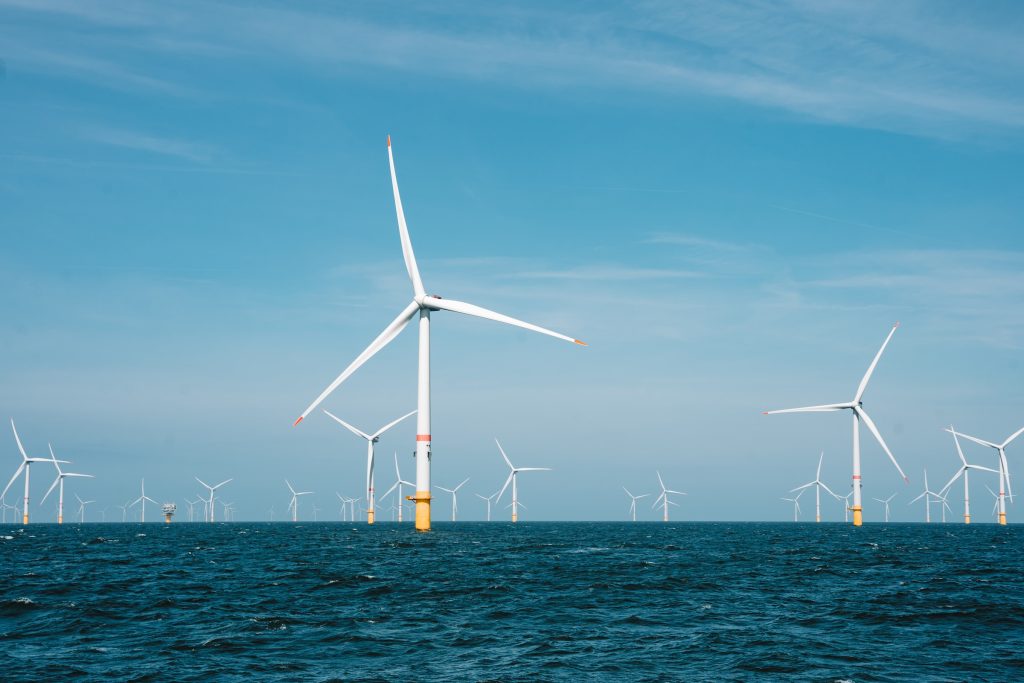Pros and Cons of Offshore Energy for the Planet
By: Jane Marsh
No energy generation method is without flaws, even renewable energy, which promises to bring the world into a cleaner, eco-conscious age. Offshore options expand the surface area where humans can build and automate energy creation.
The reliable rhythm of ocean waves can turn turbines and feed into electrolyzers. Do they provide a practical outlet for some renewables’ drawbacks, or do they have their issues?
Offshore Wind Farms
Turbines are tall and heavy enough to stay grounded on ocean floors while taking advantage of the winds flying over the watery surface. These are the current opinions based on their efficiency with existing tech.
Pros
These turbines nest in open seas where they will not interfere with boating routes. They exploit high ocean winds, touting more efficiency than onshore farms. Therefore, offshore farms require fewer turbines — and subsequently fewer materials and resources — to produce more energy than onshore farms. The Hornsea 2 off the coast of the UK powers 1.4 million homes as it’s the most significant offshore farm on the planet.
Fights over onshore horizontal-axis wind turbines primarily consist of land use arguments. Onshore farms take up vast amounts of public lands, as ideas persist that they infringe on agriculture and urbanization. Offshore wind farms eliminate this dispute because there is more space in the ocean. Additionally, there are fewer concerns over technological and land degradation, as its far-removed location prevents adverse human interactivity.
Additionally, there are numerous varieties of wind turbines, including ones designed for ocean thermal energy conversion (OTEC) and even floating variants to eliminate the need for grounding. Every advancement will equal an eventual capacity of 2 GW for offshore wind.
Cons
It’s not easy to erect onshore wind farms, but it’s easier than gathering the technology to execute offshore builds. It’s more labour-intensive and expensive. They must have corporate involvement because of it, whereas onshore farms could have independent ownership and empower businesses or investors.
Offshore Hydrogen Electrolysis
The budding technology promises no-emissions energy, but how practical are electrolyzers at this point in Earth’s clean energy journey?
Pros
Electrolyzers produce green hydrogen by splitting water into its essential elements — meaning there are no pollutants or greenhouse gas emissions. French hydrogen researchers are piloting the largest project in offshore hydrogen production through electrolysis which promises to generate 400 kilograms of hydrogen daily.
Another benefit is they complement wind turbines. The connectivity increases the value of wind power as electrolysis happens in conjunction with the turbines’ rotations. It helps adjust mindsets in the sector that there isn’t one solution to renewables — they must all work together, especially when phasing out antiquated hydrogen production methods from fossil fuels like natural gas.
Cons
Electrolyzer manufacturing capital costs are severe — whether on- or offshore. Despite recent advances, research and development are also in the early stages, making it even more costly because it has to catch up to the maturity of other renewable energies.
It’s more pricey when the electrolyzers cannot simply separate the water it’s floating on — it must desalinate and purify it for the energy to be genuinely helpful and clean.
Offshore Solar Panels
Solar panels are the most discussed renewable energy. Why limit them to rooftops when they can exist in vast deserts or the ocean? Let’s explore the viability of offshore solar.
Pros
Like offshore wind power, offshore solar panels could be more efficient than rooftop or grounded panels. According to modern simulations, the near-zero visual pollution blocking rays could make panels perform over 12% better than panels on the ground because of better global horizontal irradiance (GHI).
Solar panels are easy to clean, maintain and contain compared to electrolyzers and towering wind turbines. It even helps keep the water below it clean — the physical barrier between the sun and water prevents algal growth. Solar panels grounded in the soil would cause erosion and runoff, and choosing to float the panels is another hygienic advantage.
An unexpected advantage of offshore and nearshore solar is tourism. Countless coastal visitors love seeing these impressive structures as solar panels gleam in their renewable glory. This eco-tourism could allow viewing without damaging the structures, funding more eco-conscious efforts and companies.
Cons
Like the offshore wind, having workers oversee and repair floating panels is expensive. Workers need a boat or plane to get there, depending on whether the farm is near- or offshore. It forces companies to make large-scale farms. The investment only makes sense for an array that generates considerable power.
The floating panels remain in place because of caging or cables that run to the water body’s floor. Aquatic life can get tangled in these cables, but it isn’t as frequent or threatening to species numbers as oil spills or other byproducts of fossil fuels.
Is Offshore the Renewable Energy Frontier?
The most notable drawback to offshore renewable energy is costs. Still, it will only motivate humanity to seek research and development, streamline technology, and lobby for federal funding to make these technologies financially viable.
The efficiency speaks for itself, producing more power in water than it would on land. The future of rooftop solar or terrestrial wind farms will have floating or water-based renewables as a supplement, providing more avenues and decreasing resistance to spreading clean energy worldwide.
Jane Marsh
Editor-in-Chief at Environment.com
Email jane@environment.co
Website https://environment.co/




